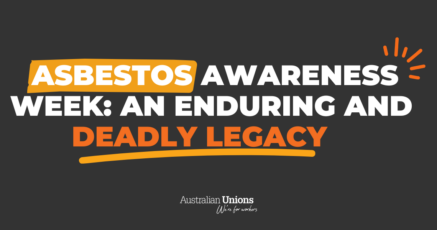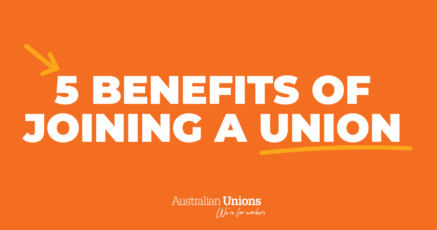What third wave?
If you’re worried about the third wave of omicron, you’re not alone. In case you missed it, there’s been some more bad news about COVID.
COVID hospitalisations in Australia have soared to more than 4,000 people. The last time we saw a figure this high was in February this year during the summer Omicron outbreak.
Australian Medical Association Vice President Dr Chris Moy warned about the impacts of the new COVID variants.
“We’re extremely worried about facing BA.4 and BA.5 subvariants which are more infectious, cause more re-infections and more severe disease,” Dr Moy said.
“More people are ending up in hospital just when the hospitals are absolutely chocker-block full because they’ve been neglected for so long.”
While Tasmania’s numbers a lower than other states given its small population, the state has seen a huge uptick in COVID cases thanks to the new subvariants with daily numbers reaching early 2020 levels.
Australian Nursery and Midwifery Federation Tasmania secretary Emily Shepherd highlighted how frontline workers are bearing the brunt, pushing through 12-hour shifts in aged care facilities due to staff shortages.
“Some of our members have picked up additional shifts, some have acted up into higher roles to ensure that there is senior oversight…there isn’t a lot of staff to fall back on,” she said.

You have rights if you want to Work From Home
Some employers are returning to fully remote Work From Home (WFH) models but not every boss has made the switch.
So, what do you do if you’re still required to go into work but you’d rather WFH?
Legally speaking, it’s a little complicated.
Employers do have a general right to direct how and where you perform your work – but they also have a legal duty to ensure your health and safety, so far as is reasonably practicable.
Before making any decision that could affect the health and safety of workers, employers must consult with their employees, as required under work health and safety legislation.
And if you’re worried about compromising your or your household’s health by attending a physical workplace outside your own home, then you won’t be the only one.
Start talking to your co-workers if you haven’t already and let your Health and Safety Representative know about your worries and get advice from your union.
If you’re already working from home, now is the best time to look at our Working From Home charter.
While it’s great that remote working is an option for many of us avoiding physical workplaces for health reasons, there are still risks associated with remote work.
No matter if you’re working at a desk or a kitchen table, you still have the rights to a decent work/life balance, appropriate work hours and privacy.
The impacts of long COVID
Long COVID is what you experience when COVID symptoms linger well after you’ve been infected with COVID. There are hundreds of symptoms that can stick around for weeks, months or even years after first becoming infected.
Around 60 per cent of people who had the Delta variant lost their smell and/or taste. The figure is around one in five for those who had Omicron.
These symptoms are long-term and so are the consequences for workers.
Workers are struggling through their jobs as they deal with health issues like brain fog, confusion, dizziness or fatigue.
Long COVID is just one more reason why employers must ensure workplaces are accessible and inclusive. We may see tens of thousands of Australian workers this year alone who will experience long COVID.
Of course, workers with disabilities have had to navigate inhospitable workplaces long before the pandemic and many welcomed the move to working from home.
The sudden transition to remote working showed us that many of the barriers to workers, especially those with disability, were put up by employers rather than being due to any job requirements.
So, if you want to change your working arrangements for the better, it’s time to start chatting to your union and your Health and Safety Representative.
We also know that prevention is better than cure – that’s why workers in unions are acting to ensure we’re supported when we need to take time off work due to COVID.
You don’t have to show up sick to work
Don’t let anyone guilt you into thinking that you can’t have a sick day just because you’re working from home. If you are feeling unwell, you have the right to stop work, no matter where you are working.
And the boss certainly can’t force you back to work if you’re COVID positive and, yes, some have tried. But union members have been there to stop it happening.
Casual workers, contractors and employees who have exhausted their sick leave shouldn’t have to choose between missing out on pay they need to keep up with high cost-of-living and coming into work sick.
The Federal Labor Government’s decision to keep the previous Morrison Government’s plan to cut paid pandemic leave as of 31 June was a shock.
The decision was made without the input union members despite workers still being required to isolate if they test positive.
With high case numbers (and new variants threatening to make them soar even higher), we need to make sure workers are supported to isolate to keep themselves and the community safe.
That’s why we are calling on the Federal Government to reverse their decision to cut paid pandemic leave.
Cover photo credit: Photo by Anna Shvets








SHARE:
How to prepare for the third wave of COVID-19